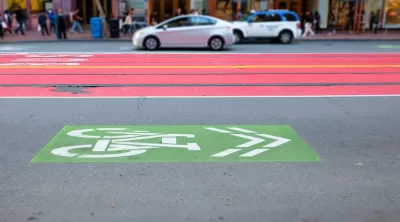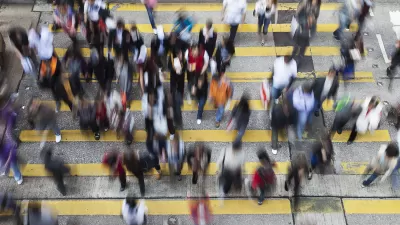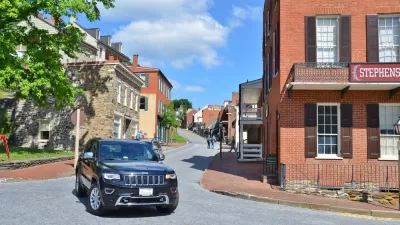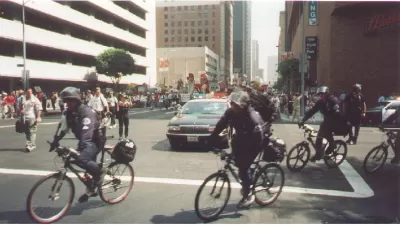Education, engineering, and enforcement are the three "e's" of Vision Zero in San Francisco. A lack of on of those "e's"—enforcement—might explain why more people are dying on the city's streets this year that any year since the city adopted Vision Z

San Francisco is five years into a ten-year Vision Zero goal, according to an article by Heather Knight, but traffic fatalities are rising on the city's streets. So far in 2019, "22 people have lost their lives on the city’s streets. That’s one less than died in all of 2018 and two more than died in all of 2017." That total includes 15 pedestrians. Another five people have died on freeways located in the city.
"[The city is] on pace to surpass the 31 deaths in 2014, the year Vision Zero began," adds Knight.
Looking for answers to the question of why San Francisco is backsliding on traffic safety, Knight identifies a lack of traffic enforcement as a likely culprit.
"New figures obtained by The Chronicle show the San Francisco Police Department is ticketing far fewer drivers for illegal behavior behind the wheel than it did the year Vision Zero was adopted," according to Knight. The neglect of traffic enforcement "could be explained by too many unfilled vacancies in the department’s traffic division and ever-changing leadership of the crucial unit."
The article includes more information about the lack of traffic safety enforcement, including data specific to the kinds of tickets written and in which neighborhoods.
FULL STORY: Deaths on SF’s streets are up. Traffic enforcement is down. ‘It’s hard to believe these aren’t related’

Montreal Mall to Become 6,000 Housing Units
Place Versailles will be transformed into a mixed-use complex over the next 25 years.

Planetizen Federal Action Tracker
A weekly monitor of how Trump’s orders and actions are impacting planners and planning in America.

DARTSpace Platform Streamlines Dallas TOD Application Process
The Dallas transit agency hopes a shorter permitting timeline will boost transit-oriented development around rail stations.

Without International Immigrants, the Rural US Population Would Be Falling 58%
Census data shows that population growth in rural areas is due in large part to international migrants.

Dead End: Nine Highways Ready for Retirement
The Freeways Without Futures report describes the nation’s most promising highway removal proposals.

Congressman Proposes Bill to Rename DC Metro “Trump Train”
The Make Autorail Great Again Act would withhold federal funding to the system until the Washington Metropolitan Area Transit Authority (WMATA), rebrands as the Washington Metropolitan Authority for Greater Access (WMAGA).
Urban Design for Planners 1: Software Tools
This six-course series explores essential urban design concepts using open source software and equips planners with the tools they need to participate fully in the urban design process.
Planning for Universal Design
Learn the tools for implementing Universal Design in planning regulations.
City of Mt Shasta
City of Camden Redevelopment Agency
City of Astoria
Transportation Research & Education Center (TREC) at Portland State University
City of Camden Redevelopment Agency
Municipality of Princeton (NJ)
Regional Transportation Commission of Southern Nevada





























